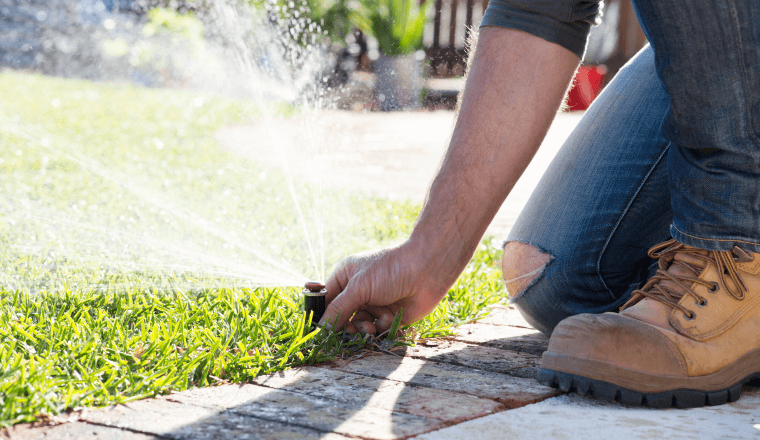How to prepare your garden for winter
In this article
- Tidying up your garden
- Preparing your soil
- Lawn maintenance
As the temperatures start to drop, it’s time to start preparing your garden for winter and get ready to switch off your sprinklers.

The Winter Sprinkler Switch Off starts on 1 June.
Winter rainfall combined with lower evaporation rates means your garden can stay healthy without irrigation during the cooler months. By switching off your sprinklers from 1 June each year, you're contributing to saving valuable water for when we need it most.
Here are our top tips to set your garden up for winter success.
Tidy up your garden
It’s important to clean up your garden beds ahead of winter. This can be done by clearing out any plants you no longer need or that may have reached the end of their life cycle. Many of your older plants can be added back to the soil in compost form to provide organic matter. Get on top of any garden pests and diseases by removing any diseased plants, fruit and leaves and make sure to remove invasive weeds.
Winter is also an ideal time to prune trees, shrubs and climbers. As trees shed leaves in the cooler months, it’s easier to determine the plant's shape and spot any potential issues like crossing branches.
Feed and prepare your soil
Good soil is the foundation of a healthy garden, not just a waterwise garden, so it makes sense to prepare your soil. Whether you’re starting from scratch or working with what you’ve got, there’s always a chance to improve your soil’s water and nutrient holding capacity.
If you’re not too sure what your soil needs, get in touch with a Waterwise Specialist for tailored advice.
Topping up mulch
We all know sunscreen is important in our sunny city, and that goes for your garden too. Applying mulch to your garden will not only reduce evaporation but also add nutrients to the soil and reduce weed growth.
When you’re selecting a mulch, always go for the chunkiest looking option. This will take longer to break down and allow winter rainfall to filter down to the soil where the plants need it.
Lastly, the key when applying mulch is to spread an even layer of about 5 - 10cm in thickness, and to remember to top it up every year.
Lawn maintenance
In the lead up to winter your lawn can really benefit from air, water and nutrients. This can be done by poking holes in the soil with an aerator, or for smaller patches of turf by using a garden fork.
Aerating your grass ahead of the colder months can help to improve drainage and allow rainfall to penetrate to the roots. Make sure to give your lawn a good feed after aerating so that it can establish itself before next summer and ensure the nutrients are circulated well within the soil.
Water smarter not harder
While water is an essential part of keeping your garden healthy, overdoing it can do more harm than good. And as the seasons change, so do the water needs of your lawn and garden.
It’s easy to set and forget when it comes to irrigation, but any good gardener knows that adjusting irrigation throughout the year is the best way to maintain a healthy garden. Most irrigation controllers have a seasonal adjustment setting, which makes it easy for you to change your sprinkler run times according to the changing needs of your garden throughout the year.
We recommend that in May, controllers are switched off and only used manually as necessary, or better still, change to a weather based irrigation controller and let the technology take care of this for you.
Learn more about creating a waterwise garden that will thrive in our climate.